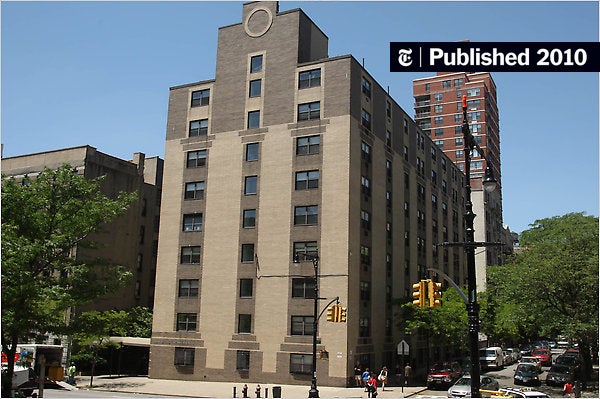[ad_1]
The practice of retrofitting buildings with simple, environmentally friendly technology like more-efficient boilers and better-quality windows has been around for years, but there is little research on how much energy these changes actually save and by extension, how much money they can save landlords and lenders.
In an effort to supply that information, Deutsche Bank Americas Foundation, the philanthropic arm of the German bank, is financing the creation of a public database of several hundred retrofitted buildings in New York City and a companion report to determine the savings from such moves.
“Retrofitting buildings is considered the low-hanging fruit in carbon reduction, but despite its simplicity, it is still not mainstream,” said Gary Hattem, president of the Deutsche Bank Americas Foundation. “The largest obstacle to making these practices go mainstream is data that will convince building owners to retrofit their properties and at the same time increase underwriters’ willingness to finance the projects.”
The project, called the Deutsche Bank/Living Cities Building Energy Efficiency Data Report, was begun last fall when the bank brought together an advisory committee that included utilities like Con Edison, city agencies like the New York City Department of Housing Preservation and Development, and lenders like the Community Preservation Corporation.
The committee issued a request for qualifications this year for a firm to head up the 18-month project. In May, it signed an agreement with Steven Winter Associates, a building consulting firm based in Connecticut, that will be partners with the economic development and real estate advisory firm HR&A Advisors, based in New York.
With more than $1 billion expected to flow into retrofitting multifamily buildings in New York City in the next decade from federal stimulus money, city commitments and private initiatives, the time is ripe to publish this report, Mr. Hattem said.
And experts in green building say the need is enormous. “There is an almost universal lack of understanding of building energy usage,” said Luke Falk, a project manager at the New York State Energy Research and Development Authority and a member of the advisory committee.
The government has subsidized programs to retrofit buildings since the Carter administration, Mr. Falk said, “but there is no national database that we know of that records the results. Likewise, utilities across the country run Energy Star programs, but there is no central aggregated database of the results of that effort.”
Developers agree that a lack of data has hampered the spread of green technologies. “If you approach a lender now with a plan to spend more to implement a green technology with the idea you will save on operating costs, they are skeptical and want to know what kind of proof you have,” said Kenneth S. Horn, the founder of the residential developer Alchemy Properties. “If you could be armed with an assortment of data, it would inevitably help you get financing and even increase your financing because your bottom line would go up.”
Constantine E. Kontokosta, the director for the Center for the Sustainable Built Environment at the Schack Institute of Real Estate at New York University, agrees. “What ends up happening is that we have studies by engineers that estimate the impact of retrofitting a building, but then the underwriters just discount it because they have nothing to compare it to,” he said.
Mr. Hattem, who said Deutsche Bank would have no proprietary stake in the data, hopes that lenders will not only finance more retrofits as a result of the project, but also use the information to create a new securitizations market.
“The idea here is that if underwriters can determine a predictable savings from retrofits,” he said, “then they can create a financial instrument backed by these savings to sell on the open market.”
The project has two parts, said Sam Marks, vice president of Deutsche Bank Americas Foundation. One will look at the preretrofit energy usage of 100 affordable housing projects, representing several hundred buildings and about 10,000 apartments across the city.
It will then look at the effectiveness of different energy modeling methods to see what can be predicted about how retrofits will affect energy usage. Finally, it will study the long-term efficacy of the retrofits in terms of how many gallons of oil or water, or kilowatt-hours of electricity, the changes saved, and translate this into dollar figures.
The types of retrofits studied will be inexpensive and efficient. “It isn’t about what new silver bullet is on the horizon,” said Marc Zuluaga, a senior engineer at Steven Winter Associates, “but rather implementing building technologies that are proven but have yet to be optimized on a wide scale.”
Among the technologies will be methods to control heat and boilers, weatherizing of buildings and new sensor-controlled lights in stairwells that turn on only when the stairs are in use.
The second part of the project will focus on the economic impact of green technology by collecting information that will show how each dollar spent in retrofits circulates through the economy and adds jobs. The goal is “to cut through the noise and rhetoric around ‘green jobs’ and root conversations about the green economy in empirical data,” according to a summary of the project.
“Nothing like this has ever been done before around the country,” said Steven Winter, president of Steven Winter Associates. “We hope this project will provide a link between what the energy savings can be in affordable housing and the financial community’s understanding of the value of this savings.”
[ad_2]
Source link
